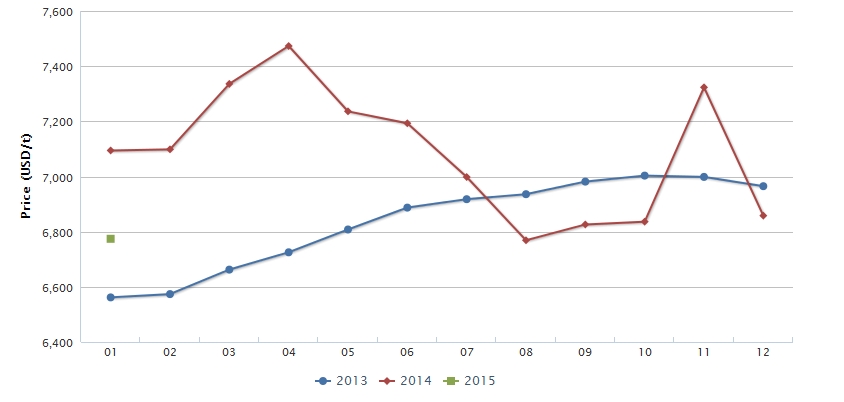In Q4 2014, the domestic pyridine
supply declined. It's expected that the price of niacinamide (vitamin B3) would
go up in 2015.
In Q4 2014, the domestic pyridine supply
reduced, mainly because operating rate in pyridine industry dropped
dramatically. It is known that the operating rate of Chinese pyridine industry
was merely about 50% by the end of 2014, while that of 2013 almost reached
100%. The low operating rate in the industry was influenced by paraquat market.
According to the No. 1745 announcement jointly released by the Ministry of
Agriculture, the Ministry of Industry and Information Technology, General
Administration of Quality Supervision, Inspection and Quarantine of the
People's Republic of China, starting from 1 July, 2014, the registration and
production permit of paraquat AS were revoked, and the production of paraquat
AS was stopped.
Only the registrations for exporting
paraquat AS were maintained and the production exclusively for export would be
allowed. Paraquat is pyridine’s downstream market, the decreasing downstream
demand led to low upstream operating rate. Chinese 3-methylpyridine (an
important intermediate of niacinamide) was mainly supplied by pyridine
enterprises, whose declining operating rate resulted in the shortage of
3-methylpyridine supply. At present, the domestic pyridine capacity amounted to
12,000 t/a. Calculated as the output ratio of pyridine and 3-methylpyridine,
the capacity of the domestic 3-methylpyridine is about 40,000 t/a.
Market price of niacinamide in China, 2013-Jan. 2015

Source: CCM
It is worth mentioning that the
anti-dumping measures against pyridine had a certain impact on its supply
decrease. On 21 Nov., 2013, China imposed anti-dumping tax against pyridine
manufactured in Japan and Indonesia, whose rate was from 24.6% to 57.4% within
five years. High tax rate led to decreasing imports. Therefore, the declining
import volume worsen the decrease of the domestic pyridine supply.
In 2015, the domestic pyridine supply will
continue to decrease, which might probably have an influence on the output and
price of niacinamide.

For one thing, raw material supply was
limited, so the domestic niacinamide output might go down. In fact, it is
anticipated that the global niacinamide capacity is about 95,000 t/a in 2015
(under the circumstance that no manufacturer puts into production). Hereinto,
the capacity of Chinese niacinamide is around 45,000 t/a, an increase of 5,000
t/a compared with that of 2013. Plants of Lonza Group and Vertellus Specialties
Inc. (Vertellus) in China successively expanded production and put into
production, respectively reaching 25,000 t/a and 5,000 t/a. In 2015, the
dramatic increasing capacity of Chinese niacinamide should have driven up its
output. However, the decreasing supply of 3-methylpyridine lowered the
operating rate; and hence, niacinamide output was restrained. For another,
soaring raw materials price drove up production cost.
The shrinking output and rising cost of
niacinamide are likely to push up its price. On 26 Jan., 2015, niacinamide
quotation was raised by 15% by Vertellus in advance, and so was
3-methylpyridine. At present, even though other domestic manufacturers have
intention to raise price, price won’t increase that much in short term for the
excessive supply over demand.

About CCM:
CCM is the leading market intelligence provider for China’s
agriculture, chemicals, food & ingredients and life science markets. Founded in 2001, CCM offers a
range of data and content solutions, from price and trade data to industry
newsletters and customized market research reports. Our clients include Monsanto,
DuPont, Shell, Bayer, and Syngenta. CCM is a brand of Kcomber Inc.
For more information about CCM, please visit www.cnchemicals.com or get in touch with us directly by emailing econtact@cnchemicals.com or calling +86-20-37616606.
Tag: niacinamide